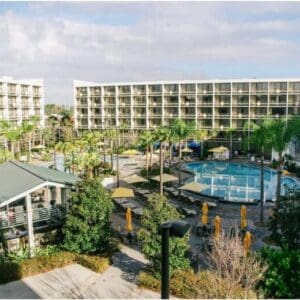If your hotel has a reasonable amount of meeting space (+10,000 ft.) and your banquet business is a significant contributor in your Food and Beverage Department (+20 per centÊof F&B revenue), you are going to want to separate local banquet business from group banquet business on all of your financial statements, forecasts, budgets and daily reporting.
At this moment you may be asking, ÒWhy would I want to do that? That sounds like a lot of work.Ó There are some very good reasons to make this practice a standard in your hotel. I see many hotel financial statements and most are missing the boat because they do not separate group and local banquet revenues. Separating this reporting and setting it up properly provides powerful information you can use in your hotel to make better decisions and ultimately be more profitable. When you take the process apart and look at each piece, it is not complicated. It just requires someone who wants to do it. That begs a question: ÒWhy would I want to set up separate revenue reporting for groups and locals inside my banquet department?Ó
 1. Track the revenue and follow the profitability
1. Track the revenue and follow the profitability
You want to know how much banquet revenue is generated by groups in-house who occupy your bedrooms vs the revenues generated by local customers who use your hotel’s meeting rooms and banquet facilities, but don’t occupy rooms.
We normally refer to the business coming from in-house groups as Conference Service. We call the business that comes from customers who do not occupy rooms as Catering and we also call them Group and Local.
If a significant portion of your F&B revenue comes from banquets, there is a very good chance that you have two competing elements inside this revenue stream. You want to know how much revenue comes from each separate element. In rare circumstances (like a remote resort without significant local business), this separation may not be necessary. All other hotels that have a good mix of business would benefit from reporting this data separately.
You want to know the revenue separation for all types of sales in the banquet department. The following areas need separate reporting: food, beverage, room rental, audio visual, gratuities and miscellaneous.
2. Groups versus local
You need to understand the spending characteristics of these two different customers so you can choose your customers wisely. If you are running a full-service banquet and meeting facility and, on top of it, you have a few hundred bedrooms to sell, you want to use the meeting and banquet facilities to drive room nights. When you do not have opportunities to fill your hotel with groups, you want to be able to sell your space to local customers who want to hold meetings and events without staying at your hotel.
Understanding the spending and profit potential that each different element produces will help you develop your strategy for selling to groups vs local business. What does the average customer spend in local catering vs in-house groups? What are your minimum food and beverage sales per room occupied for your in-house groups? What is the minimum amount spent on food and beverage to release the main ballroom or other anchor rooms in your hotel? An essential element to properly manage your hotel is understanding these characteristics and the corresponding seasonality. Separating the revenues is the only way to go.
When you review your financials, your budgets and forecasts you need to understand the makeup of the entire revenue picture in your hotel. Groups vs transient and corporate room revenue and local vs. in-house banquet business create a different picture each month, week and day in your hotel.
Understanding what it will take to drive the maximum revenues and profits starts with understanding the piece of business that is going to bring you the greatest contribution of both and what time of year. In most hotels with significant meeting space, it is group business; when these group opportunities are minimal, like summer, holidays and weekends, you want to sell your space to local catering customers. Therefore, you need separate financial revenue reporting within the banquet department to measure your effectiveness. If you lump it all together as many hotels do, you are missing a huge opportunity to better understand and manage your business.
The second reason is to organize your team: sales, conference services and catering so you can sell and service the business most effectively. This is where the water quite often gets murky.
Depending on how you organize your efforts in catering and conference services, you probably have people dedicated to one or the other or, in some cases, both group and local elements. In your sales department for rooms, you have sales managers with segments to sell into, quotas to meet, and bonuses to earn. These sales quotas must contain food and beverage spending minimums. This is a critical hook that many hotels waiver on with groups in certain Òneed periods.Ó
In conference services, you want to know how much revenue each seller and each group is generating. You want to have Intel so you can see the overall spending of each in-house group. You want to know how much revenue is produced by each catering manager. These leading indicators help you maximize your revenues and profits. If you do not know how much revenue each seller in the various areas is producing, how will you know how effective they are and what is possible.
Are you leaving money on the table by not having enough sellers in each area? Are the efforts of each seller today producing enough revenue to justify their positions? Are your F&B spending parameters effective and do they adjust seasonally to reflect your change in business mix? Do your catering minimums and room rental policies reflect the most up-to-date data? Most hotels cannot tell you these important statistics. The main reason is that they do not separate group and local business reporting.
On top of all of this is the 6,000-pound rhinoceros in any hotel that has significant group business mixed with local banquet demand. How and who controls the meeting space in your hotel? What tools do they have to help them decide when to release banquet space for local business and when to hold onto it to sell to groups?
3. Organize guidelines to make the best decisions for the hotel
In most hotels, this is a hotly contested subject. Most hotels have some guidelines but when you dig into the policy for meeting space vs room nights, vs room revenue, vs banquet revenues, vs group spending, vs local spending, vs the profitability for each element, you are not going to find much in the way of evidence to win your case. You will find a lot of opinions but not a lot of facts to back them up.
Having these spending and room night guidelines, by season, by day of the week, and by segment with an effective review process is the picture you want to build. By building this structure in your banquet department you will start to develop your revenue management muscles. The combined rooms and banquets, groups and local revenue management intelligence in your hotel is the result.
You need to create the system to separate these two revenue streams in your banquet department to see what is really going on; and it is not difficult. It begins with how you organize your selling and servicing of groups, their corresponding banquet event orders ÒBEO’sÓ and separate codes for group vs local. Next, it is a point of sale system ÒPOSÓ that has separate revenue buckets for the group and local sales. These are easily set up. You need floor staff who are trained to ÒpostÓ the banquet sales to the corresponding codes from the BEO’s. You need to review and ensure that all revenues are posted correctly.
Next, you need to set up daily reporting for the group and local sales on your daily flash reports. Your monthly financial statements and general ledger need to be programmed to have separate codes and reporting for the group and local sales inside the banquet department. Monthly forecasts and annual budgets that include analysis and reporting are also necessary.
Summing it all up
Track and report your banquet group and local business separately. Do this on all your financial reports, daily, monthly and annually. Budget and forecast these revenue streams separately. Track and manage these revenue streams by the seller. These disciplines will lead you to full-blown revenue management processes that integrate rooms with banquets.
Understand your business better with the right data and you will make better selling decisions and increase your overall hotel profitability.
It is not complicated. What are you waiting for?
By David Lund

David Lund is The Hotel Financial Coach andÊan international hospitality financial leadership pioneer. He has held positions as a Regional Financial Controller, Corporate Director and Hotel Manager with Fairmont Hotels for over 30 years. He authored an award-winning workshop on Hospitality Financial Leadership and has delivered it to hundreds of hotel managers and leaders. David coaches hospitality executives and delivers his Financial Leadership workshops throughout the world, helping hotels, owners and brands increase profits and build financially engaged leadership teams. David speaks at hospitality company meetings, associations and he has had several financial leadership articles published in hotel trade magazines, and he is the author of two books on hospitality financial leadership. David is a certified hotel accounting executive through HFTP and a certified professional coach with CTI.
Want to keep up to date with industry news? Click here to subscribe toÊeHotelier’s dailyÊe-newsletter.


 1. T
1. T

















